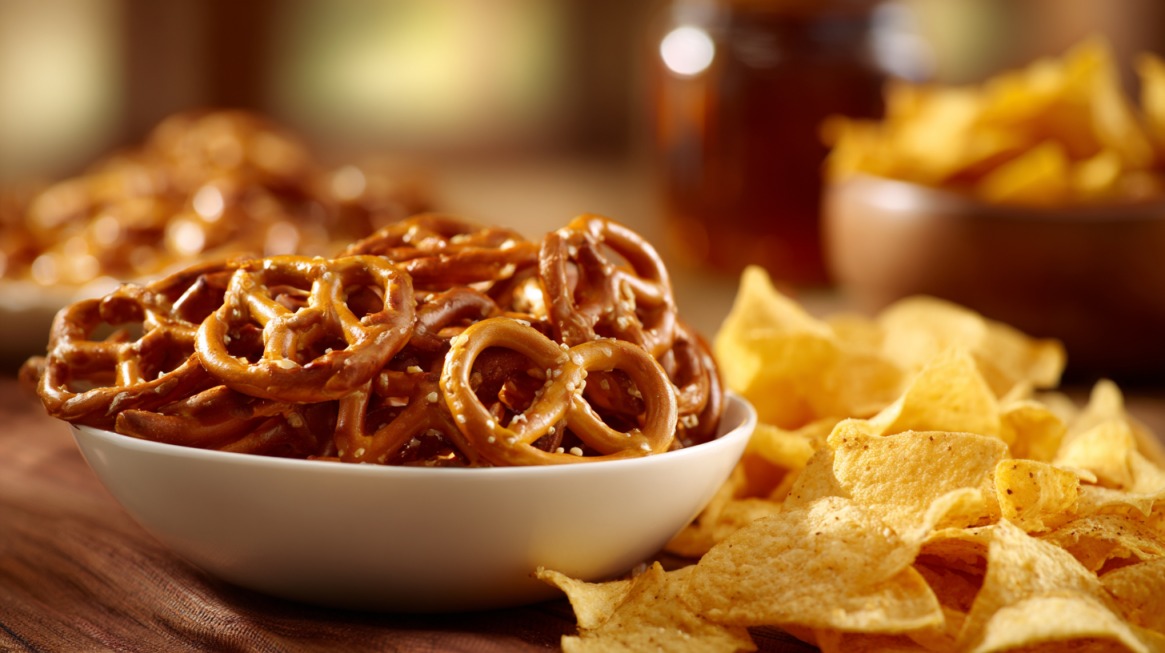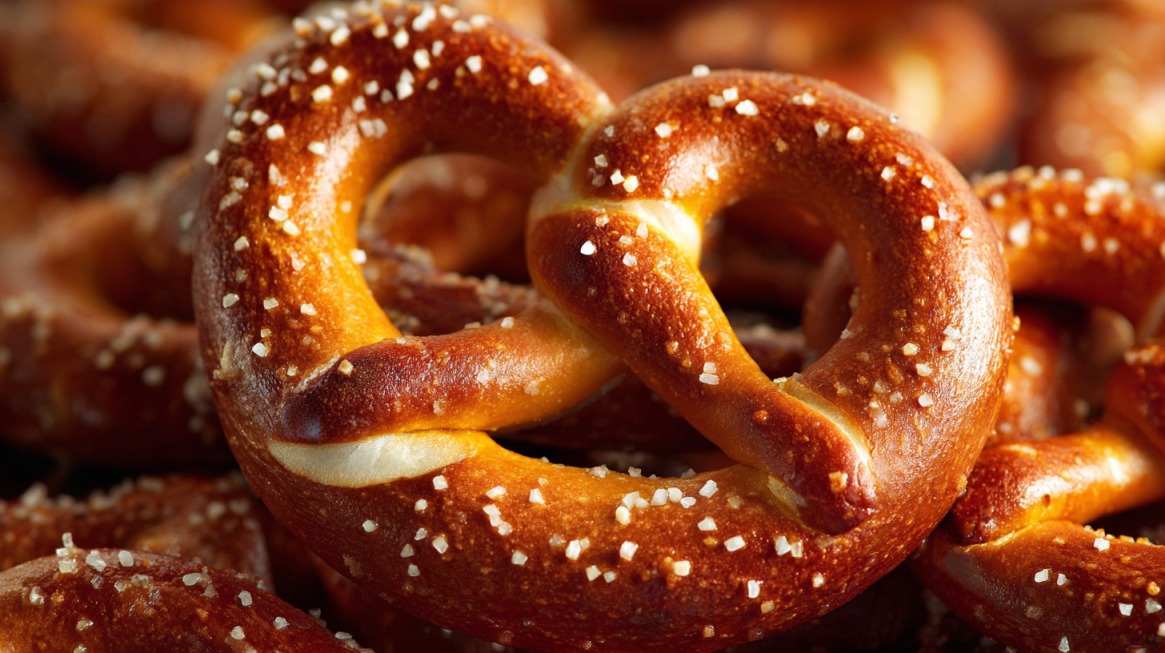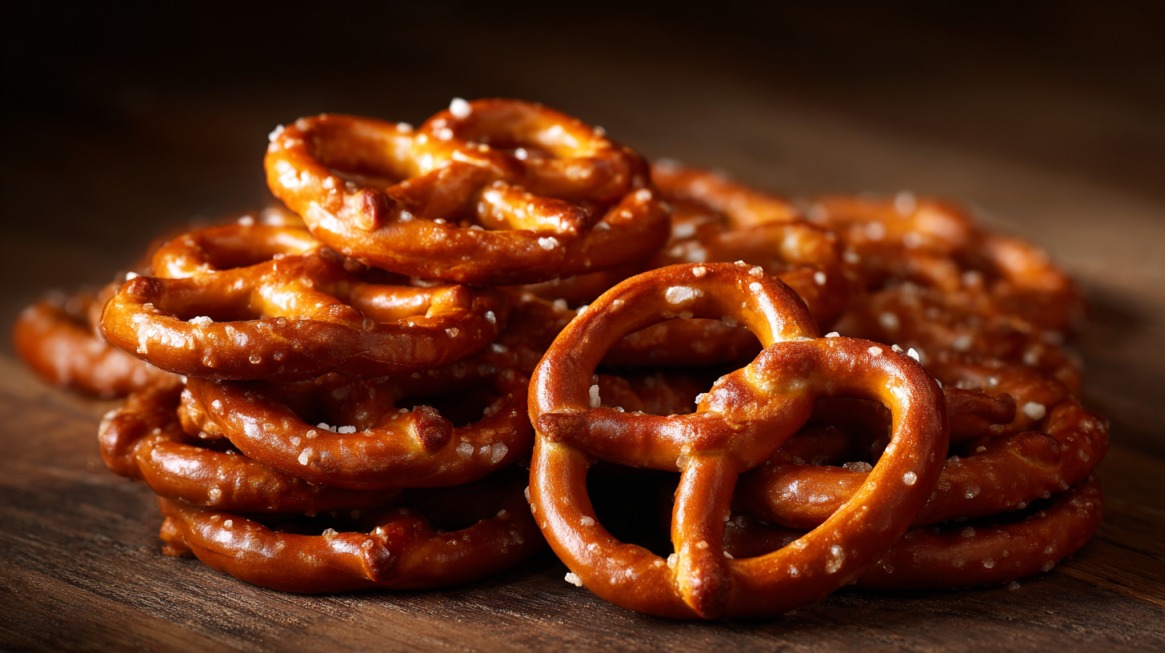Pretzels often show up as a quick, crunchy snack that feels lighter than chips or fries.
Their golden twist and salty flavor make them irresistible, but few stop to consider what they’re actually made of. Are they a smart snack choice or just another refined carb trap?
A closer look at their ingredients, nutritional value, and how they fit into a balanced diet reveals that pretzels can be both beneficial and misleading, depending on how they’re chosen and consumed.
Are Pretzels Healthier Than Other Snacks?
Pretzels can sometimes be a better choice compared to options like potato chips, which often contain more fat and calories.
However, air-popped popcorn generally outperforms pretzels in terms of fiber and protein content, offering a more satisfying snack for fewer calories.
Nutritional context matters; portion control, toppings, and pairing choices can make or break their health potential.
When combined with yogurt dip, nut butter, or vegetables, pretzels become part of a more balanced snack. The key lies in moderation and selecting versions made with whole grains and reduced sodium.
- Versus Chips: Fewer fats, slightly fewer calories.
- Versus Popcorn: Lower fiber, less protein.
- Verdict: Moderately healthy if portioned and paired smartly

What Are Pretzels Made Of?
Pretzels begin with a simple dough made of wheat flour, water, yeast, and salt.
That basic combination creates the foundation of most commercial and homemade pretzels. Depending on the recipe, a small amount of sugar or fat may also be added to enhance flavor and improve texture.
While the ingredient list appears straightforward, the preparation method is what gives pretzels their signature taste and crispness.
Before baking, the dough is shaped into its famous twisted form and briefly boiled in a lye or baking soda solution. That process alters the surface pH, producing the characteristic brown crust, slight bitterness, and chewy interior that define soft pretzels.
Hard pretzels go through a longer baking process at a lower heat, removing more moisture and resulting in a crunchier, longer-lasting snack.
Modern variations expand far beyond the traditional plain type. Today, pretzels can be found filled with cheese, peanut butter, or chocolate, or covered in coatings like yogurt and caramel.

Nutritional Breakdown
| Nutrient | Amount |
|---|---|
| Calories (Energy) | 483.34 kcal |
| Protein | 11.73 g |
| Total Fat | 4.43 g |
| – Saturated Fat | 0.99 g |
| – Monounsaturated Fat | 1.53 g |
| – Polyunsaturated Fat | 1.36 g |
| Cholesterol | 4.29 mg |
| Carbohydrates (Total) | 99.23 g |
| – Sugars | 0.36 g |
| – Dietary Fiber | 2.43 g |
| Sodium | 2007.72 mg |
| Calcium | 32.89 mg |
| Iron | 5.61 mg |
| Magnesium | 30.03 mg |
| Phosphorus | 112.97 mg |
| Potassium | 125.84 mg |
| Zinc | 1.34 mg |
| Copper | 0.18 mg |
| Selenium | 24.6 mcg |
| Vitamin A (IU) | 0 |
| Vitamin C | 0 mg |
| Vitamin E (alpha-tocopherol) | 0.77 mg |
| Vitamin K (phylloquinone) | 3.86 mcg |
| Thiamin (B1) | 0.59 mg |
| Riboflavin (B2) | 0.41 mg |
| Niacin (B3) | 6.11 mg |
| Vitamin B6 | 0.03 mg |
| Folate (total) | 34.32 mcg |
| – Folic acid | 0 mcg |
| – Folate, DFE | 34.32 mcg_DFE |
| Vitamin B12 | 0 mcg |
| Carotenoids (Beta, Alpha, etc.) | 0 mcg |
| Lutein + Zeaxanthin | 24.31 mcg |
| Cryptoxanthin, Lycopene | 0 mcg |
A standard serving of hard pretzels, about 1 ounce or 28 grams, contains around 110 to 120 calories, almost entirely from carbohydrates.
Most of those carbs are refined, offering quick energy but little nutritional depth. Sodium levels average about 350 milligrams per serving, which can quickly add up throughout the day. Fat, protein, and fiber content remain low, typically under 2 grams each.
Soft pretzels, often enjoyed warm, provide more calories and carbohydrates, sometimes up to 400 calories and 80 grams of carbs per serving.
They usually contain butter or oil, slightly increasing fat content but also boosting flavor and softness. Sodium levels tend to be lower than in hard pretzels, though large serving sizes often offset that difference.
Whole wheat or enriched pretzels represent an improvement. They offer 2–4 grams of fiber and a mix of added nutrients like B vitamins, iron, and folate. Those help support metabolism, red blood cell health, and sustained energy.
However, these versions are still primarily carbohydrate-based and should be eaten in moderation.
- Typical Serving: 110–400 calories, depending on style.
- Macronutrient Balance: High carbs, low fat, low protein.
- Nutritional Upgrade: Whole grain or enriched types supply more fiber and vitamins.
Health Benefits of Pretzels (When Chosen Wisely)
View this post on Instagram
Pretzels can serve a positive role in a balanced diet when chosen with intention. Their high carbohydrate content provides a fast energy source, ideal for athletes or anyone needing a quick boost before physical activity.
Whole-grain pretzels, in particular, contain complex carbs that release energy gradually and support blood sugar stability.
Fiber content in whole wheat versions aids digestion and helps maintain satiety. Combined with a protein source, like hummus, peanut butter, or cheese, pretzels can turn into a satisfying snack that keeps hunger away longer.
Enriched varieties contribute small but valuable amounts of iron, folate, and B vitamins, which help the body produce energy efficiently and maintain healthy red blood cells.
Pretzels are naturally low in fat, which can make them a better option compared to fried or oily snacks. They can also serve as a portable and versatile food choice, fitting easily into lunchboxes, road trips, or quick office snacks. Choosing unsalted or lightly salted versions can further support cardiovascular health.
- Energy Source: Quick carbohydrates for pre-workout fuel.
- Fiber Boost: Whole wheat versions support digestion and fullness.
- Micronutrient Support: B vitamins and iron aid energy metabolism.
- Lower-Fat Option: Less greasy than chips or fried snacks.
The Drawbacks
Pretzels may seem like an innocent snack, but several downsides exist. High sodium content is one of the most concerning factors.
A small serving can contain over 300 milligrams of sodium, and larger portions can easily exceed one-third of the daily recommended limit. Regular overconsumption can lead to elevated blood pressure and increased risk of heart disease.
Their carbohydrate structure also presents challenges. Refined flour varieties have a high glycemic index, causing quick spikes and drops in blood sugar.
That pattern may leave individuals feeling hungry soon after eating and can be particularly problematic for those managing diabetes or insulin resistance.
Pretzels provide very little protein, fat, or fiber, which makes them less filling than balanced snacks. It’s easy to overeat, especially since they lack the natural signals that trigger fullness. Additionally, standard pretzels offer few vitamins or minerals and are unsuitable for those avoiding gluten.
To enjoy pretzels healthfully, portion control and smarter pairing are essential. Choosing whole grain, low-sodium versions and eating them with high-protein or high-fiber foods helps offset many of their nutritional gaps.

- High Sodium: Contributes to blood pressure issues.
- Low Nutrient Density: Limited vitamins, minerals, and fiber.
- Quick Blood Sugar Spikes: Refined flour impacts glucose levels.
- Gluten Content: Unsuitable for gluten-intolerant individuals.
Final Verdict
Pretzels can fit into a healthy eating plan, but moderation is the rule. They aren’t automatically bad, yet they aren’t nutrient powerhouses either.
Choosing whole grain, enriched, or low-sodium varieties helps reduce health risks. Pairing them with foods high in protein or fiber transforms them into a more balanced option.
In short, pretzels make an acceptable occasional snack but shouldn’t dominate your daily choices. Mindful selection and controlled portions are key to enjoying them while maintaining a nutritious diet. So next time you’re in for a healthy snack or a quick breakfast, think about the pretzels.
Hi there, my name is Kelly Barlow and kellytoeat.com is my blog. Here, I write about various recipes I want to reccommend to readers.
I try to find the best possible recipes that can attract the attention of readers, and at the same time, I strive to write it in the most engaging manner possible.
When I was younger, I wanted to become a chef. Sadly, it wasn’t meant to be, but at the very least, I write about it.
